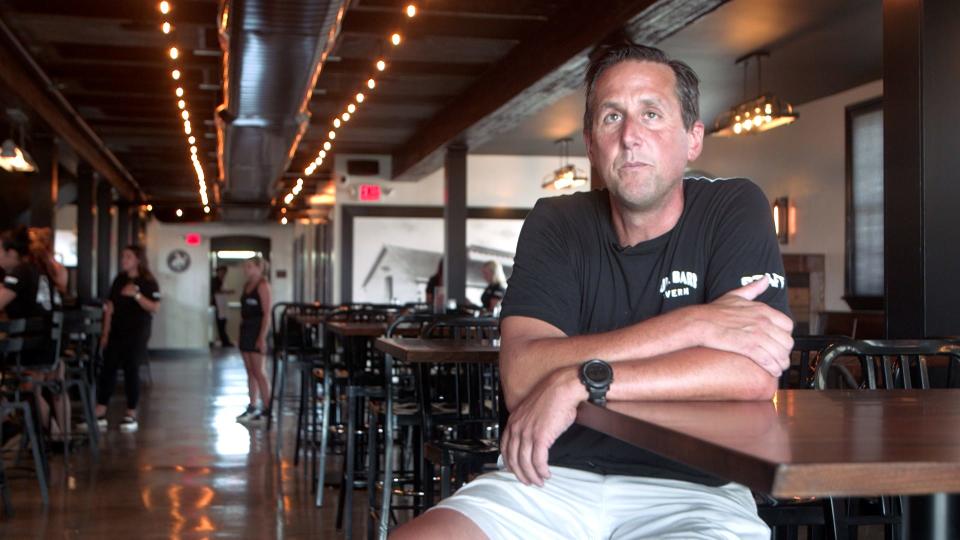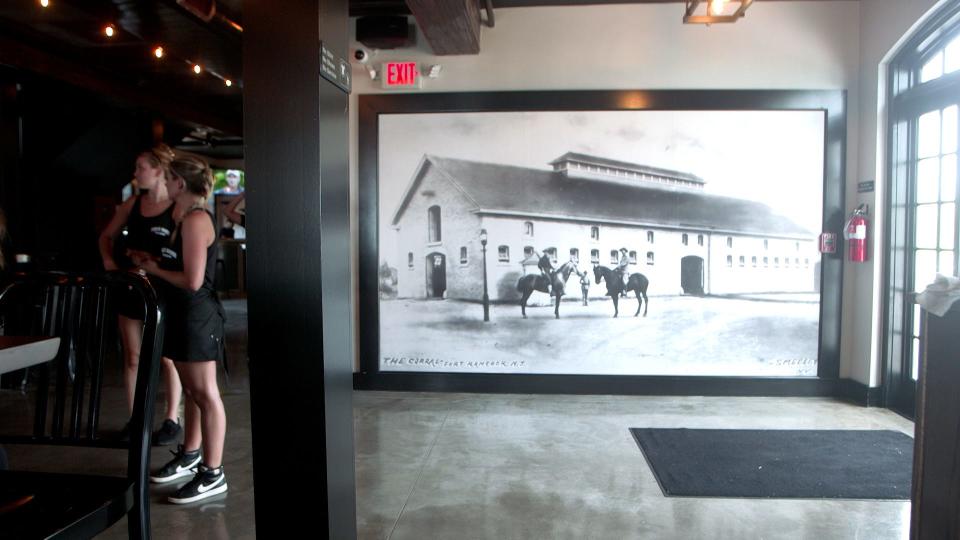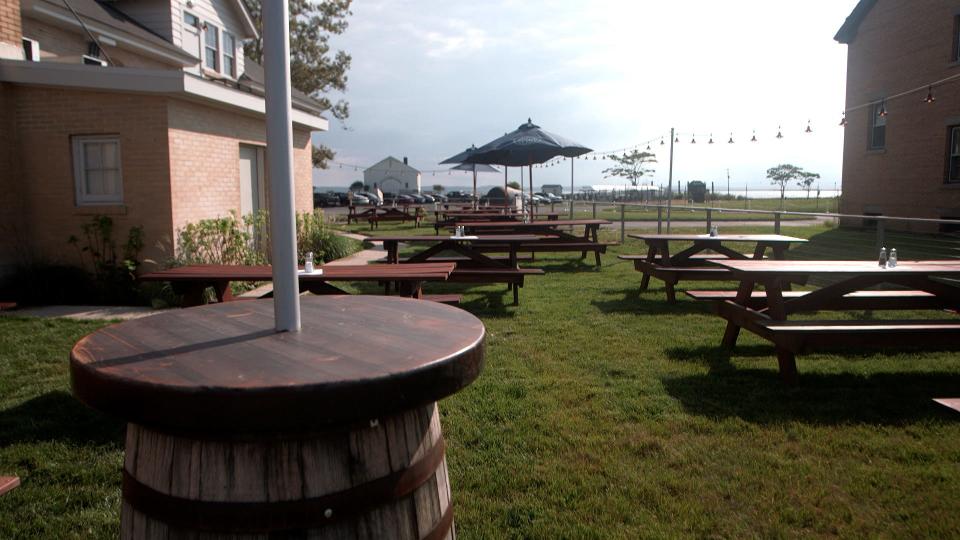'Enormous potential': Sandy Hook's Mule Barn Tavern opening after years in the making
SANDY HOOK - A century ago, when someone entered Fort Hancock’s building No. 35, it was to feed or move the U.S. Army mules stabled at the northern tip of Sandy Hook.
Now visitors can do the eating in this historic structure — and have a drink, too.
After three and a half years of preparation, the Mule Barn Tavern opens Friday, Aug. 18. Owner Dan Ferrise plans to operate it year-round and hopes it will accelerate the revitalization of the former fort, whose largely abandoned buildings have been decaying since the installation closed in 1974.
“It’s like my third child,” Ferrise said Wednesday during the tavern’s trial run for friends and family. “It’s a special building to me, and it’s been a lot of work over a long time. I hope everybody else enjoys it, too.”

Sandy Hook: Fort Hancock gets closer to putting over 80 apartments in historic Officers Row
Located at the intersection of South Bragg Drive and Kearney Road on the Hook’s bayside, the 6,000-square-foot tavern features three seating areas — a first-floor bar and dining space that holds 150 people, an upstairs room for private parties, events or overflow dining that seats 110 to 115, and an outdoor patio with a view of Sandy Hook Bay that seats 150.
The full kitchen offers the gamut of tavern fare — a pizza oven, burgers and sandwiches, salads, appetizers, and a handful of entrees. Beers on tap include local products Carton (out of Atlantic Highlands), Kane (of Ocean Township) and Asbury Park blonde. The drink menu features eight “tavern mule” cocktails with ginger beer and lime among the ingredients.
The wall next to the entrance displays a blown-up photo of the old mule barn (with mules and mounties pictured) from 1910. The barn was built with the fort in 1895.

Fort Hancock: How Sandy Hook base protected New York City from being bombarded
“We want to keep the history of the building alive,” Ferrise said.
Preserving that character through what Ferrise calls a “casual industrial” décor was daunting at times. In leasing the building from the National Park Service, which runs Sandy Hook and a leasing program that allows entrepreneurs to repurpose its structures, Ferrise faced numerous logistical hurdles that backed up the grand opening.
“You’re dealing with the historical (preservation code) aspects of it, and this building wasn’t outfitted to be a restaurant. You’re bringing in all your utilities brand new,” he explained. “Once you get into (renovating) the building, there are a lot of things that can happen when it’s 130 years old.”
Bayshore history: College students find original Twin Lights lighthouse — and 200-year-old taxpayer ripoff
But Ferrise, who lives in Monmouth Beach, was inspired to forge ahead by his prior experience renovating Building No. 52, the sergeant’s quarters — a two-unit structure with two bedrooms and one bathroom on each side that he rents out through Airbnb.
“The more time I spent out here, people would stop me and thank me for renovating,” he said. “And I thought, having some kind of commercial space where people could gather and get something to eat, this would be the ideal location.”

Sandy Hook: Sandlass House named one of NJ endangered history landmarks
In 2021, Building No. 53 was converted into “McFly’s On The Hook,” a general store/deli/catering hall. The Mule Barn Tavern is the first liquor license operating on the peninsula.
“This is not going to be (just) a summer place,” Ferrise said. “One of the reasons why I did this is how many local people come out here all year, just to get away. You drive 15 minutes past the gate and you feel like you’re in another state.”
The tavern is open seven days a week, 11 a.m. to 9 p.m. (9 is when Sandy Hook closes, but special events could run later). After this fall — the first floor contains several flat-screen TVs, which presumably could draw a big football-watching crowd — Ferrise will reevaluate whether to scale back to six days for the winter months.
“September and October are some of the best months out here,” he said.
History here: Black loyalists fought for their freedom — and the crown — at Sandy Hook during Revolution
The Mule Barn Tavern’s fortunes will be closely watched by other potential entrepreneurs. A proposal to convert 21 of Fort Hancock’s stately but crumbling “Officers Row” houses into bayfront apartments while maintaining their historic facades has been the source of spirited debate in recent years.
Ferrise sees his tavern as an example of what's possible.
“I hope when people walk into a building as dilapidated as it is, they can see past that and realize the location of these buildings offers enormous potential,” he said. “I hope a lot of buildings on Officers Row get done and I hope it jump-starts a lot of activity our here, that people really build up a community out here.”
Jerry Carino is community columnist for the Asbury Park Press, focusing on the Jersey Shore’s interesting people, inspiring stories and pressing issues. Contact him at jcarino@gannettnj.com.
This article originally appeared on Asbury Park Press: Sandy Hook Mule Barn Tavern is year-round attraction at Fort Hancock

